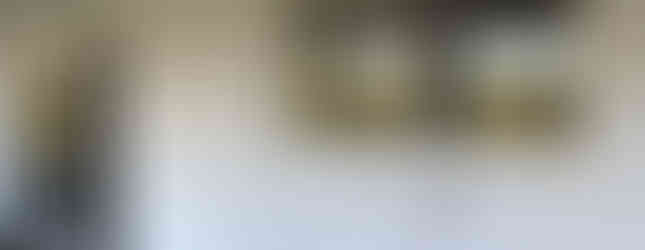Drab Knotty Pine --> Fresh White Shiplap
- Jennifer M.
- Nov 13, 2019
- 4 min read
Updated: Nov 13, 2019
Ever have a project in mind, but delay starting on it for two years because it's too overwhelming to even think about? Yeah, me neither. After our yearly Labor Day week vacation this year, I finally decided I wanted to tackle our sun room. It's a great bonus space, with plenty of windows overlooking our beautiful property. I've had two excuses that have prevented me from getting started: weather (it's unconditioned space and we live in the Midwest, so too hot and too cold are pretty valid excuses), and tackling the knotty pine walls. The sun room is in direct view as soon as somebody walks into the front door of our house, and it was a bit of an eyesore; the knotty pine was out of place compared to the rest of main floor and the faded navy blue indoor/outdoor carpet, gag. It needed an update, like, two years ago.
My grand vision:
Paint the knotty pine a "cottage-y" white to make it look like ship lap
Add faux beams to the ceiling
Have a built-in bench for a dining nook
Get rid of the carpet!
Painting was definitely the starting point for this project (and most projects, really). So, when I decided it was finally time to tackle this room, I called a local painter. After plenty of research, I was very aware of what was going to be involved, and frankly I didn't want to do it. I changed my mind pretty quickly when the painter's quote came back at, brace yourself, $1,800! The very next day, I was making a list of what I needed to get started, picking paint swatches, and nixing plans on my calendar for the next three weekends.
Step 1: Wash the walls with water and a mild detergent (I used vinegar and water). I seriously contemplated skipping the step because, lazy, but after I saw how disgusting the water was afterward, I was pretty happy I did it. Sorry for the visual, but also, this is why you shouldn't skip washing the walls either.

Step 2: This step is continuous throughout the whole process, or at least it was for me. Caulk any large seams or spaces and fill nail holes if they're not already. If you're going for the ship lap look, you don't necessarily want everything to be perfect, but at the same time, keep in mind that white paint shows everything; cracks and holes become dark and super noticeable. And this is why I say it was a continuous step for me. As I continued caulking and priming, I'd notice spots that I had either missed, had thought would be okay, or were just so large that the caulk shrunk enough that it needed to be touched up. (Note: Because my space is unconditioned, I tried to find a caulk that could handle temperature fluctuations.)


Step 3: Even though we did this in two steps, we'll count it as one. Prime the walls with an oil-based primer. I really didn't want to use oil-based, because its often thick and smelly, but I read so many horror stories of people going through this process and having knots appear through their white paint years down the road, it's worth it. It's really not that bad either, but I'm so so good at psyching myself out. First, we spot primed the knots to make sure that they would get enough coverage without having to do a full second coat on the entire room. Then, we primed the full wall. I used a brush to spot prime (you'll quickly realize why it's called KNOTTY pine, there are SO. MANY. KNOTS.), a brush to cut-in and prime along some of the larger gaps and a roller for the rest of the full coat.
At this point I started feeling like I was getting somewhere! It was amazing how much brighter the room was (and how noticeable it was from inside the house). This is also where I realized I needed to go back to Step 2 and re-caulk, and then re-caulk again. I swear, every time I would come back to it, I would see another spot to caulk. Also, this is the point where I realized that the inside of the exterior door was a dingy tan, which is all I can see when I look at these pictures. Eww.
Step 4: PAINT! Finally! I recommend a quality interior paint, so you get good coverage. Even painting white on a white primer will likely require multiple coats. I did (with the help of my mother-in-law), one solid full coat, using a brush to cut in and paint around the windows, and a roller for the walls. Once it dried, I came back through with just a roller to do a near full second coat, but mainly focused on areas that noticeably needed it. This is where you start to realize that it was all worth it. And, how terrible that faded indoor/outdoor carpet really is.
And there you have it! It wasn't as terrible as I thought it was going to be, it just took time and a little patience. Time that was well worth it and already made the space unrecognizable from what it once was! Next up, those faux beams I'm dreaming about...
Products I used (not sponsored):
Zinsser Oil-Base Primer (I swear by Zinsser)
Benjamin Moore Regal Select "Simply White" in an Eggshell finish


















Comments